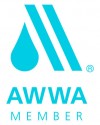Last week, the AWWA came out with a comprehensive study called Buried No Longer: Confronting America's Water Infrastructure Challenge. The report's conclusions are startling but not unexpected. We in the water industry have known for a long time that we have a severely aging infrastructure, and that it needs attention. The projected need for WATER PIPELINE WORK ALONE, both replacement/rehab and new pipe due to population growth, is projected to be over a trillion dollars between now and 2035! A trillion!! And that is just for the water pipe. That is not for drinking water treatment, wastewater treatment or piping, or stormwater.
Yet, everywhere water and wastewater utilities are meeting opposition to rate increases, and in the current economic climate, that is not likely to change. Utilities are having to be creative, to stretch their maintenance dollars and to be proactive to meet the needs of their service districts.
So Where Should You Focus Your Marketing Effort?
What did the study actually tell us as far as marketing to these utilities? First, approximately half of the needs, over $507 billion, are in the south. Half!! And two thirds of that, over $302 billion, is for growth. Those of you who market new pipe should really be focused on this area, as should the trenchless technologies both for new pipe and for replacement pipe.
Also informative was the table (Figure 3) on the size of utilities and the replacement value of their existing water pipe. Again, the South had the highest replacement value, a combined $883 billion out of $2.14 trillion, for 41.2% of the total. The next highest region was the midwest, with a replacement value of $486 billion total. But, what was more interesting was that $203 billion, almost 10% of the total, was for VERY SMALL utilities - defined as those serving under 3,300 people. I live in the rural south, and I can confirm from experience that the needs are tremendous. But this market is often over looked. Resources are limited in these small, generally rural communities, and they are already feeling the impacts in deteriorating water service and increases in line breakages.
Water infrastructure user rates will go up
Rates for very small utilities in the south are, not surprisingly, expected to be most heavily impacted by the infrastructure needs. The study (pg12) estimates that in some small communities, the rate may increase by as much as $550 per household above current levels. These areas are also frequently the poorest regions of the states, particularly in the south, so these rates will be the most difficult to adsorb for these populations, and every dollar will have to be well spent.
How do you market these smaller communities?
These smaller communities have fewer technical resources, often have no staff engineer and may not even be serviced by a consulting engineer. They certainly are not served by the large engineering firms, so if your marketing efforts are limited to the big multinational firms, you will never even learn of the opportunities in these smaller communities. They will require the most education of their options, and those marketing materials will need to explain technical issues clearly and avoiding technical jargon. White papers will need to be short, directed at the smaller engineering firms that will likely design or oversee the improvements. Case studies of other small communities will be vital to increasing credibility. Alternative financing options should also be considered.
I know these communities and I feel the pain that they experience when I see the water flowing in streets from breaks they can't fix, and they don't know where to turn. Frankly, several of these small to very small communities have been my clients, and I still check in with them regularly. I know that they are thirsting for solutions that are affordable for their communities.
So, what's your marketing strategy?
If you are ready to position yourself to address this growing infrastructure crisis, I would like to help. Particularly if you are interested in marketing your solutions to the small to very small communities, I believe the data shows that there is a large untapped market there waiting to hear from you. Everyone in the US should be able to turn on the faucet and know that there will be adequate safe drinking water there for them. They are counting on you.



Most Americans don't boil our water unless there is a water main break, flood or puilbc announcement by the government. Our water supplier is supposed to notify us if our water doesn't meet EPA or state standards or if there is a waterborne disease emergency. If we know all the contaminants in our water these days, we should take more precaution. Yeah, I agree, purifier + boiling is the best way to go! (I heard boiling alone doesn't get rid of all the chemicals and metals in tap water)exile